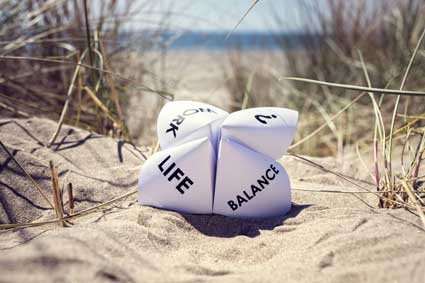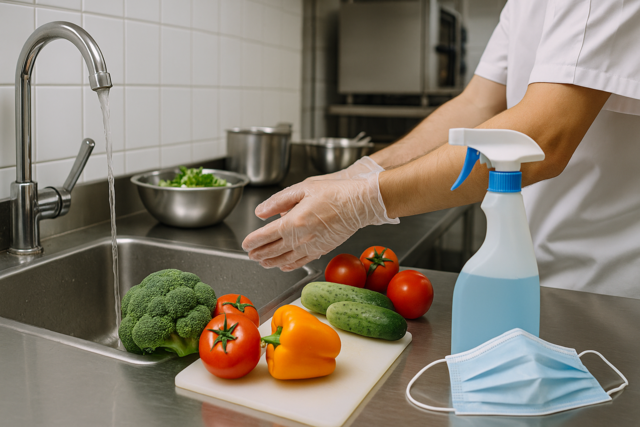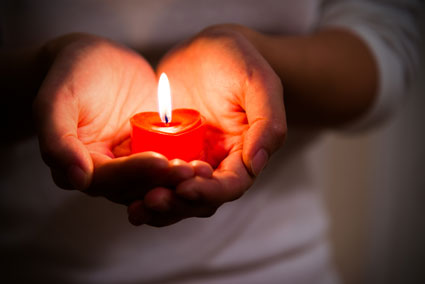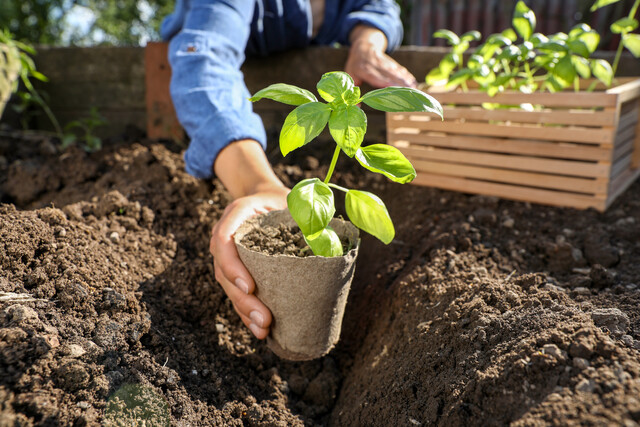Another concern is the potential harm to members of your own family. If you have young children at home, for example, it might be dangerous to have certain brand name cleaning supplies within their reach.
Other people are concerned about the cost of brand-name cleaning products. Convenience comes at a steep price in many instances. But, there are many examples of brand name products containing very cheap materials. By using the same materials, you can very easily make your own products.
Before we begin discussing how to make your own products, it is necessary to understand the fundamentals. Once you understand the chemistry of cleaning � and some fundamentals � you will easily be able to determine what products will offer the best cleaning solution. Over time, you might not need to refer to recipes every time you have a cleaning job. You will know that baking soda is good for grease spills, for example, or that vinegar is great at cleaning glass.
Many years ago, before the widespread use of antibiotics, many housekeepers were extremely concerned with germs and bacteria. There was a time when good hygiene and effective cleaning literally meant the difference between life and death. We are not at the same level of risk today, but dirt contains millions of organisms, many of them that can make us very sick. It is true, though, that not all bacteria are harmful. In fact, we have an enormous amount of bacteria in our bodies that help our body's normal functions. Cleaning is meant to rid our environment of the bad bacteria.
Small microorganisms cannot be seen with the naked eye. They are so tiny that we can, for example, breathe millions of microorganisms in a single breath. The presence of these microorganisms in the air or on a surface in our house doesn't automatically mean that we'll get sick. These substances have to get into our body in the first place, most likely through our nose or mouth. Each human can handle a different amount of these bacteria, depending on a variety of factors, including age and the general health of the individual. The elderly and the very young are more susceptible to getting sick from little amounts of harmful bacteria.
This harmful bacteria comes from a variety of sources. The air we breathe and the food we eat all have the potential to contain harmful bacteria. Some comes from our own bodies � we cough and sneeze substances that can contain harmful substances and can make other people sick. We come into contact with bacteria in many more situations than most people realize.
What Does "Clean" Mean?
So what does being "clean" mean? Regular cleaning keeps the level of harmful bacteria under control. The objective in cleaning is not simply to make something look nice, although that is certainly one goal. When we say a surface or an object is clean, we are saying that the amount of harmful organisms on it is at a safe level. The rooms that have the most potential to contain very harmful bacteria are the kitchen and the bathroom.
While we are removing harmful bacteria, it's important to replace cloths, mops, and other tools frequently. Otherwise, these dirty cloths will defeat the purpose of your cleaning efforts. Mops should be left to air-dry after use because most bacteria flourish in damp and wet conditions. For the same reason, you should never leave a wet sponge by the kitchen sink, as it will most surely contain mold and mildew over time.
How Does Cleaning Work?
Cleaning involves both a chemical and physical reaction to get rid of dirt and substances. The physical actions of scrubbing and vacuuming, for example, help to remove bacteria from surfaces. Some cleansers contain very fine particles that help scrub away this dirt and bacteria, although as we will discuss, some cleansers are inappropriate for certain surfaces and fabrics. We also make use of abrasive tools such as coarse sponges and nylon scourers to help scrub surfaces.
Cleaning also has a chemical element. Most products we use, whether they are natural products or manufactured chemicals, will react with other products. The products will also react with dirt. This reaction is due to the chemical composition of the products we use. Most chemical reactions needed for cleaning need to happen within water. Water helps to mix ingredients together and facilitates a chemical reaction. We will now discuss these chemical reactions in water.
Acids and Alkalis
Chemicals are typically divided into two main categories: acids and alkalis. When a substance is dissolved in water, if it has a pH value above 7, it is considered an alkali. If it has a value below 7, it is considered an acid. Water is neutral � it has a pH value of 7. A detailed discussion about pH values is not part of this article, but pH is a measurement of the activity of the hydrogen ions in a product.
Since most dirt and body oil is slightly acidic, we tend to use alkali products to neutralize the acids. Generally speaking, you use an alkali product to fight dirt that is acidic. Similarly, you would use an acidic product to combat substances that are alkaline in nature. For example: baking soda is an alkali. It has a pH value of 8. It is best used on dirt and substances that are acidic in nature.
Cleaning Purposes of Alkalis and Acids
The following is a list of alkalis and acids that can be used for household cleaning. The lower the pH value, the most acidic a substance is. Be very careful when dealing with acids. As the pH value increases above 7, a substance is considered an alkali.
Acids
-
Hydrochloric acid � pH 0.8 � This is an ingredient used to create some toilet cleaners. It is not recommended that you use hydrochloric acid to create your own cleaning supplies. It is listed here to demonstrate that is has an extremely low pH value (less than 1) and it means that it is an extremely acidic product.
-
Sulphuric acid � pH 1.1 - This is another strong acid that is used in some cleaners. The very strong acid content does not make this a safe product to use in some households. Be mindful that there are some "natural" products such as some acids that, while natural, can be harmful to humans.
-
Lemon Juice � pH 2.4 � Lemon juice has a variety of uses in household cleaning. This naturally occurring acid is a harmless cleaning agent that can help to break down limescale and can help to remove tarnish from copper (when combined with salt).
-
Cola � pH 2.5 � The acid in cola can help remove limescale from toilets.
-
White vinegar � pH 2.9 � The acetic acid in vinegar breaks down limescale and has so many household cleaning uses. It will be used a wide range of cleaning tasks.
-
Carbonated water � pH 5.1 � Carbonated water contains carbonic acid, which produces the "fizz" when carbon dioxide escapes from it.
Alkalis
-
Baking Soda � pH 8.0 � Baking soda cuts through grease and neutralizes odors, particularly acidic odors.
-
Borax � pH9.2 � Used for bleaching whites and deodorizing.
-
Detergents � pH between 9 and 11 � Detergents are mildly alkaline.
-
Household bleach � pH 12.5 � Chlorine bleach is the most commonly used bleach. Bleach should be used with caution. It is used in a variety of cleaning tasks, most effectively as a disinfectant.
Making Your Own Cleaning Supplies
Homemade cleaners work because they use the chemistry we discussed above. Some brand-name products that you buy in stores sometimes use natural ingredients as a selling point, which leads many people to wonder why they can't just create their own products and save money.
Just as it can be dangerous to mix together two store-bought products, it can also be dangerous to mix two natural products. Please follow these recipes carefully in order to create safe products to use. If you attempt to clean something with one product and it is not as effective as you'd like it to be, be sure to completely wash away any residue of the product before you try using a different one.
Here's two cool cleaning tips:
Cleaning the Kitchen
Since the kitchen is where we prepare meals, it is best to begin the chapter with a discussion on kitchen safety. Keeping a clean house means more than just making your house look clean � your house must beclean. You cannot see bacteria. You cannot see small organisms that live on our surfaces. But, these substances can harm us and even make us very ill. It is especially important to keep the kitchen clean because food prepared in a dirty kitchen can often be very harmful.
Kitchen Safety
-
Do not use the kitchen sink for other cleaning tasks, such as floor washing or bathroom floor mopping.
-
Always wash your hands before preparing food.
-
Always keep kitchen work surfaces free of clutter.
-
Always have a separate towel for drying dishes and hands.
-
Deal with all dishes after every meal � either wash them or put them in the dishwasher.
-
Use a covered trashcan in the kitchen, and empty it regularly.
-
Sweep the kitchen floor at least once per day.
-
Don't sort dirty laundry on any kitchen surface.
Washing your hands before preparing food is very important, but it is also an important consideration during food preparation as well. Some of the raw food we handle, especially meat, contains bacteria. Cooking food to a specific temperature (which varies depending on the food) will kill most bacteria, but keeping your hands clean at all times is another important way to stop the spread of bacteria.
Cleaning Food Preparation Surfaces
All food preparation surfaces should be cleaned before and after every meal. Many people make the mistake of cleaning up only after a meal. Food preparation surfaces come into contact with many objects throughout the day. If you have pets, they might sit on the kitchen countertop, even if you never see them do it!
Warm, soapy water and a dishcloth are perfectly adequate for removing most bacteria. Wipe down all surfaces before you prepare food, and while you are washing up after a meal. To disinfect a surface, you can add a few drops of household chlorine bleach to the water. Just a few drops will suffice. You should wear rubber gloves if you are using bleach, as some people's hands might be too sensitive to handle bleach. Chlorine bleach quickly evaporates, so you should leave the surface damp for a few minutes. After a few minutes, wipe the remainder of the liquid with a disposable paper towel.
Kitchen Cloths
Cloths are used constantly in the kitchen � for drying, washing, and cleaning. Bacteria can very quickly form on kitchen cloths, especially those cloths that are used often, and these bacteria could spread to your hands and food. Even if a cloth does not look dirty, it could very easily be contaminated. Paper towels should be used for wiping up juices from meat products and any other substance that is sure to contain bacteria. You should have one cloth for washing dishes, one towel for drying hands, and one towel for drying dishes. You should replace these towels on a daily basis.
Cleaning Cabinets and Appliances
-
Wipe the outside of the appliance or cabinet with warm, soapy water. A few drops of any household dish detergent will suffice.
-
Use washing soda to remove any grease deposits. (See a previous chapter for definition of washing soda and other items in your cleaning kit).
-
Use a plastic spatula to scrape away any large grease deposits.
-
Do not use anything abrasive on stainless steel surfaces � it will leave a scratch or permanent mark.
-
Clean glass with a half-and-half mixture of white vinegar and water, from your cleaning kit.
Cleaning the Oven
Ovens usually end up being difficult to clean when grease gets built up and baked on to the surfaces of the oven. If you have self-cleaning oven, most grease deposits are reduced to ash that can be easily wiped away. If you do not have a self-cleaning oven, there are several ways to clean your oven, including a caustic method and a non-caustic method.
Non-caustic Method of Cleaning Your Oven
The non-toxic method is to coat all of the surfaces of your oven with baking soda and a few drops of water. Leave this mixture to soak for a few hours or even overnight. You can then scrub the residue off with warm water and a scouring pad. This method might require some forceful hand movements, but you will be using all natural ingredients and no harsh chemicals.
Caustic Method of Cleaning Your Oven
Ammonia or bleach (but never mixed together) can be used to clean your oven racks and the inside of your oven when you have particularly tough grease deposits.
If you use ammonia, you must wear a respiratory mask!
If you use bleach, then you should dilute the bleach according to the directions on the product. Put water and the bleach into a spray bottle and spray the inside of the oven. Rinse the inside of the oven with a cloth and clean, warm water.
Cleaning the Inside of Your Refrigerator
Pull the refrigerator away from the wall and vacuum the cooling tubes on the back of it with your vacuum attachment. Doing this will enable your fridge to operate more efficiently and eliminate harmful dust.
Remove all of the shelves and trays and wash them in warm, soapy water. Never use caustic chemicals to wash the inside of your refrigerator. Dry all shelves with a clean towel.
For the inside walls of the fridge, use a mild solution of a few teaspoons of baking soda in warm water. To keep your fridge smelling fresh, put a few teaspoons of baking soda onto half a lemon and place it in your refrigerator. You can replace the lemon regularly.
Cleaning the Kitchen Sink
Some professional cleaners believe that a kitchen sink can often be the dirtiest item in your house since it is a breeding ground for organisms and bacteria from food. You should disinfect your kitchen sink once daily. Fill your sink half way with warm, soapy water and add a few drops of chlorine bleach. It is recommended that you do this at the end of the day and leave the water in the sink overnight. Never do dirty jobs in the kitchen sink, such as using it to hold water for mopping your floors. Use your kitchen sink exclusively for washing dishes and food preparation.
To clean your kitchen sink, use warm, soapy water with a few drops of any household dish detergent. For particularly tough stains or hard-water stains, a few drops of white vinegar or a non-abrasive cream cleanser would be effective.
To clean the garbage disposal in the sink, sprinkle some borax into the drain and allow it to stand for about fifteen minutes. Add a few slices of lemon and hot water to the drain occasionally and turn on the disposal to wash the inside of it. It will help to keep the inside of the disposal smelling fresh.
Cleaning the Dishwasher






















